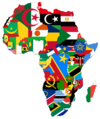
Freetown is the capital and largest city of Sierra Leone. It is a major port city on the Atlantic Ocean and is located in the Western Area of the country. Freetown is Sierra Leone's major urban, economic, financial, cultural, educational and political centre, as it is the seat of the Government of Sierra Leone. The population of Freetown was 1,055,964 at the 2015 census.

Surgeon-Major James Africanus Beale Horton was a British Army officer, surgeon, writer and banker. Born in Gloucester, Sierra Leone into a Creole family who were liberated from enslavement by the Royal Navy, he began attending the SLGS in 1845. After graduating from Fourah Bay College, Horton received a War Office scholarship study medicine in Britain to prepare him for a career in the British Armed Forces, and he attended King's College London and the University of Edinburgh. Serving in the West India Regiments, Horton was posted to various locations within the British Empire, including Lagos, the Gambia, Sierra Leone and the Gold Coast and participated in the Anglo-Ashanti wars.
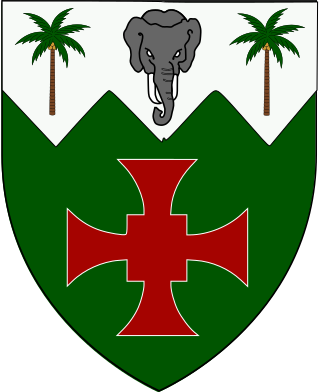
Fourah Bay College is a public university in the neighbourhood of Mount Aureol in Freetown, Sierra Leone. Founded on 18 February 1827, it is the first western-style university built in Sub-Saharan Africa and, furthermore, the first university-level institution in Africa. It is a constituent college of the University of Sierra Leone (USL) and was formerly affiliated with Durham University (1876–1967).
Njala University (NU) is a public university located in Njala and Bo, Sierra Leone. It is the second largest university in Sierra Leone. The largest and main campus of Njala University is in Njala, Moyamba District; the other campus is Bo, the second largest city in Sierra Leone.
Lamina Sankoh, born Etheldred Nathaniel Jones, was a Sierra Leone Creole pre-independence politician, educator, banker and cleric. Sankoh is known most prominently for helping to found the Peoples Party in 1948, one of the first political parties in Sierra Leone. It eventually became the Sierra Leone People's Party.
Edward Jones (1807–1865) was an African American missionary to the colony of Sierra Leone. Jones was a prominent missionary and figure in the colony of Sierra Leone; he was the first naturalized citizen of Sierra Leone. Jones was the first black principal of Fourah Bay College and held the post for 15 years. He was the first Black American to graduate from Amherst College in Massachusetts. Edward Jones was the brother of Jehu Jones, a prominent African-American preacher.
Clifford Nelson Fyle was a Sierra Leonean academic and author, known for writing the lyrics to the Sierra Leone National Anthem.

Sierra Leone – United States relations are bilateral relations between Sierra Leone and the United States.
Professor Eldred Durosimi Jones was a Sierra Leonean academic and literary critic, known for his book Othello's Countrymen: A Study of Africa in the Elizabethan and Jacobean Drama. He was a principal of Fourah Bay College. Jones died in Freetown, Sierra Leone, on Saturday, 21 March 2020.

Edward Wilmot Blyden III was a diplomat, political scientist and educator born in Freetown Sierra Leone Protectorate. He distinguished himself as an educator and contributor to post-colonial discourse on African self-government, and Third World non-alignment. He was the grandson of Edward Wilmot Blyden.
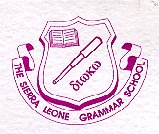
The Sierra Leone Grammar School was founded on 25 March 1845 in Freetown, Sierra Leone, by the Church Mission Society (CMS), and at first was called the CMS Grammar School. It was the first secondary educational institution for West Africans with a European curriculum. Many of the administrators and professionals of British West Africa were educated at the school.

The Ahmadiyya Muslim Community is the second-largest sect of Islam in Sierra Leone, behind only Sunni Islam. The earliest history of the Community in Sierra Leone dates back to the early period of the Second Caliphate, when at least six people are said to have conveyed their adherence to the faith. The sect attained rapid growth in the country after the 1937 arrival of Nazir Ahmad Ali, the first permanent Ahmadi missionary in Sierra Leone. Recent estimates by Ahmadi community suggest that there are approximately 560,000 Ahmadi Muslims in Sierra Leone, which is about 9% of the country's total population. Sierra Leone has the largest percentage of Ahmadi Muslims by share of total population in the world.
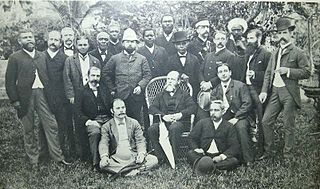
Robert Smith FRCSE (1840–1885) was a Sierra Leonean medical doctor who served as an Assistant Colonial Surgeon in Sierra Leone during the late nineteenth century. Smith was the first African to become a Fellow of the Royal College of Surgeons of Edinburgh after completing his medical studies at the University of Edinburgh.

The Saro, or Nigerian Creoles of the 19th and early 20th centuries, were Africans that were emancipated and initially resettled in Freetown, Sierra Leone by the Royal Navy, which, with the West Africa Squadron, enforced the abolition of the international slave trade after the British Parliament passed the Slave Trade Act 1807. Those freedmen who migrated back to Nigeria from Sierra Leone, over several generations starting from the 1830s, became known locally as Saro(elided form of Sierra Leone, from the Yoruba sàró). Consequently, the Saro are culturally descended from Sierra Leone Creoles, with ancestral roots to the Yoruba people of Nigeria.

The Sierra Leone Creole people are an ethnic group of Sierra Leone. The Sierra Leone Creole people are descendants of freed African-American, Afro-Caribbean, and Liberated African slaves who settled in the Western Area of Sierra Leone between 1787 and about 1885. The colony was established by the British, supported by abolitionists, under the Sierra Leone Company as a place for freedmen. The settlers called their new settlement Freetown. Today, the Sierra Leone Creoles are 1.2 percent of the population of Sierra Leone.
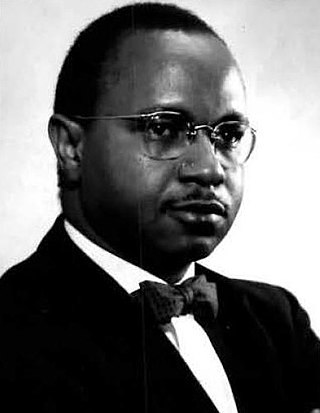
Arthur Thomas Daniel Porter III was a Creole professor, historian, and author. His book on the Sierra Leone Creole people, Creoledom: A study of the development of Freetown society, examines their society in a way in which few books of their time period had, and it is one of the most quoted books on the Creoles. He was published in East Africa and the UK.
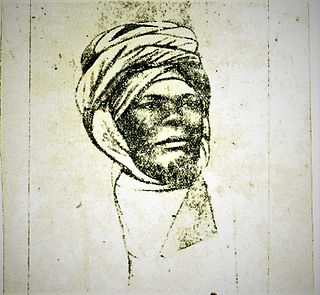
The Oku people or the Aku Marabout or Aku Mohammedans are an ethnic group in Sierra Leone and the Gambia, primarily the descendants of marabout, liberated Yoruba people who were released from slave ships and resettled in Sierra Leone as Liberated Africans or came as settlers in the mid-19th century.

Orishatukeh Faduma was a Nigerian-American Christian missionary and educator who was also an advocate for African culture. He contributed to laying the foundation for the future development of African studies.
Thomas Sylvester Johnson was a Sierra Leonean Anglican bishop and theologian born in Freetown to a Krio farming and trading family of Liberated African stock.














